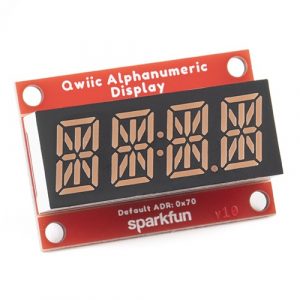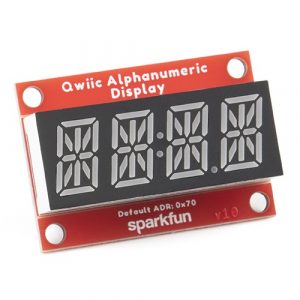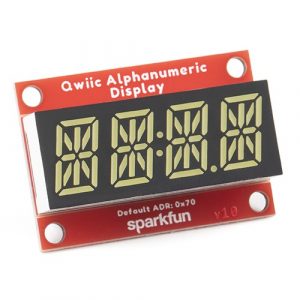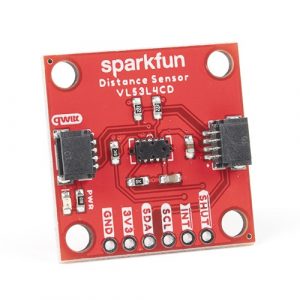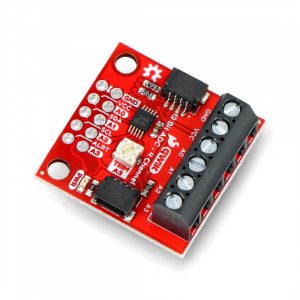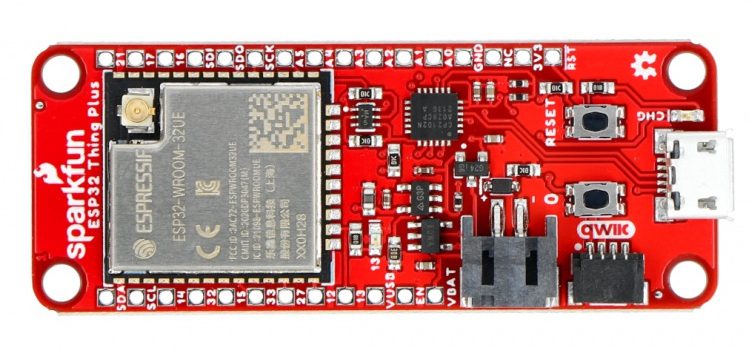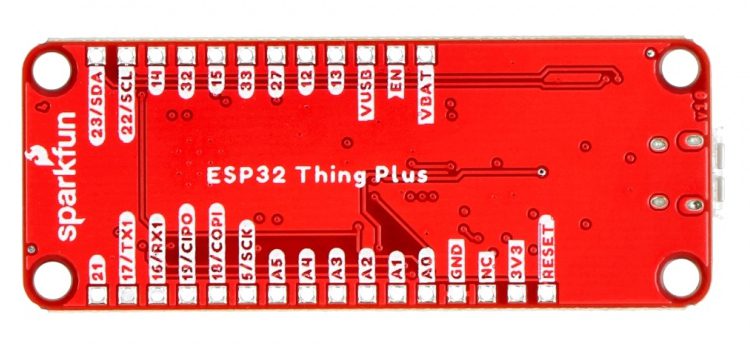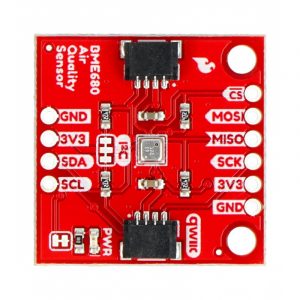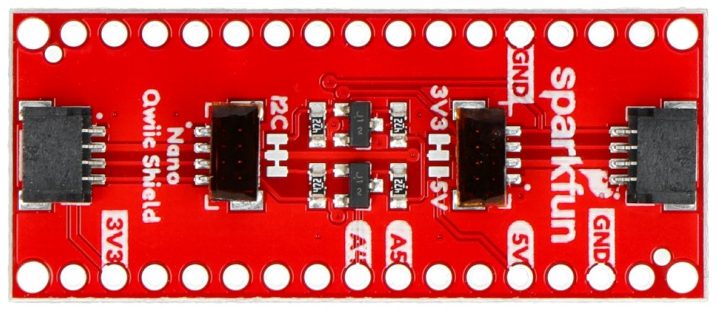Table of Contents:
If we were to announce a competition for the widest range of electronic modules, Sparkfun could certainly stand proudly on the podium. The manufacturer offers many modules that, with their different shapes, equipment and applications, will satisfy the needs of even the most fanciful projects. Development boards, modules with sensors, displays and overlays, practically everything you could possibly need should be in their product range.
Botland receives newer and newer hardware every now and then, so in order to make your search easier, we will briefly present what is new in our offer from this manufacturer.
Alphanumeric displays
Even the simplest of designs inspire respect and look professional when a display is used. Even if it is a simple, segmented alphanumeric display. We have recently added quite a few such displays to our shop’s offer, which can have different coloured backlights.
They consist of four fields with 14 separately illuminated segments, which gives us the possibility to display up to 4 characters – numbers or letters, as the segments are arranged in such a way that most letters of the alphabet can be displayed legibly. Available colours are: white, violet, pink, green, red and blue. For communication they use the I2C bus, with communication taking place via the on-board Qwiic connectors. There are four mounting holes in the corners of the board and two special holes for hanging on the wall.
Distance sensor 1-1300 mm
The laser distance sensor finds a range of applications, from simply measuring distances through its use in gesture control systems to autonomous or semi-autonomous vehicles.
After all, its design and dimensions of 25 x 25 mm are conducive to use even in the least expected places, so you will certainly come up with some more, crazy and unique application for such a module.
The distance sensor uses a VCSEL (Vertical Cavity Surface Emitting Laser) with a semiconductor diode, which makes it possible to measure the distance to an object from 1 mm to 1300 mm with millimetre resolution. The laser has a field of view of 18° and a maximum reading speed of up to 100 Hz. Of course, it uses Qwiic connectors for communication, of which it has one each at two opposite edges.
12 Bit ADC Converter
Today, it is difficult to imagine a device whose heart would not be a microcontroller or similar digital circuit. What remains unchanged, however, is the ability to perform analogue measurements, just as before. How is this possible? By using an ADC converter, which allows to convert a continuous analog signal into a sequence of zeros and ones – the signal in digital form.
Just such “translator” is module from SparkFun – Qwiic 12 Bit ADC. Analogue signal through screw connector or vias goes to 4-channel converter ADS1015, where signal is converted into digital form. As it happens with SparkFun modules, we have of course two Qwiic connectors to use to connect it to the main board without soldering. There is also a 10kOhm potentiometer on the module surface.
The module has 3 modes of operation: Single Shot (single conversion), Continuous Conversion (continuous conversion) and Duty Cycling (cyclic conversion). The measurement range is ± 0.256 V to ± 6.114 V.
ESP32 Thing Plus WROOM board
The topic of the Internet of Things seems to gain momentum and have stronger publicity literally every week, because in an attempt to meet customer expectations, manufacturers are outdoing themselves in creating modules that will perform well in this system. The main assumptions? The best possible connectivity in the smallest possible size.
The Thing Plus ESP32 is, according to the manufacturer, the board most favoured by its fans for IoT projects. The set of components is, after all, quite promising – a 32-bit processor clocked up to 240MHz, 21 GPIO pins, 16MB Flash, WiFi, Bluetooth classic and BLE. Available connectors are microUSB for power and programming, JST, which will be used to connect an external Li-Pol battery and Qwiic connector. However, today we present a slightly improved version – the one marked WROOM, which includes connecting an external antenna via an additional U.FL connector.
BME680 environmental sensor
The more values we measure, the more precisely we are able to investigate a phenomenon, place or object. No compromises here – the more data the better. Of course, different investigations require a different set of specialised sensors, but it is often possible to be tempted by such modules that will provide most of the necessary data.
The SparkFun Environmental Sensor Breakout, by using Bosch’s BME680 sensor, provides simultaneous measurement of several values that we usually find most useful. Being more specific – it enables measurement of temperature in the range of -40°C to 85°C, humidity in the full range of 0% to 100% RH, pressure in the range of 300 hPa to 1100 hPa and VOCs from 0 IAQ to 500 IAQ. It uses both through-hole solder fields and two Qwiic connectors for communication and power supply.
Arduino Nano Qwiic Shield
Sometimes even the most advanced development platforms cannot ensure compatibility with all the components we happen to want to use. Fortunately, there are also ways to do it and it is not about soldering single wires to ensure communication between modules. A much more elegant way out of the situation is to use an appropriate overlay.
For example, to connect any of the modules described above, e.g. to an Arduino Nano, we can use the Qwiic Shield, which gives us an additional 4 Qwiic connectors to use. Two ports have been placed vertically with respect to the board, and two horizontally. The lead expander streamlines the Arduino prototyping process – just connect it to the board with a goldpin strip and snug it up.
How useful was this post?
Click on a star to rate it!
Average rating 0 / 5. Vote count: 0
No votes so far! Be the first to rate this post.

